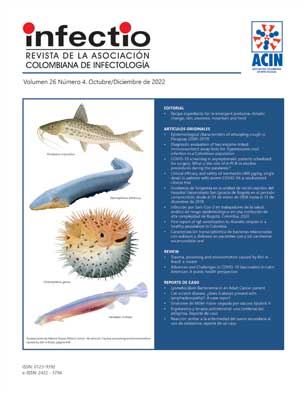Advances and Challenges in COVID-19 Vaccination in Latin American: A public health perspective
Contenido principal del artículo
Resumen
The vaccination against SARS-CoV-2 has been recognized as a priority strategy to safeguard public health. However, disparities in productive, acquisitive and distributional capacity have led to delays in immunization, particularly in low- and middle-income countries. Consequently, global coverage is expected to achieve herd immunity against COVID-19 by 2023 or 2024, although with highly variable coverage percentages among countries. In Latin America, immunization against COVID-19 faces different challenges to achieve herd immunity. To date (February 6, 2022), the countries that had several doses needed to immunize their populations with at least two doses (number of doses between population) were Peru (520.7%), Chile (458.4%), Argentina (298.0%), Brazil (236.6%), Bolivia (206.0%) and Uruguay (unconfirmed doses). On the other hand, Uruguay (210.7%) and Chile (238.3%) have applied twice as many doses as their populations. Argentina (194.3%), Brazil (173.6%), Ecuador (170.3%), Peru (170.3%), Costa Rica (161.1%), and Panama (153.5%) are on the way to achieving this goal. In addition, Latin American countries also showed an insufficient distribution of vaccines and a storage capacity limited to only a few cities and multiple frequencies of vaccine hesitancy. Due to these scenarios, the production of more vaccine doses and equitable distribution to the rest of the population within the Latin American region should remain a public health priority to achieve collective immunity in the shortest time possible

